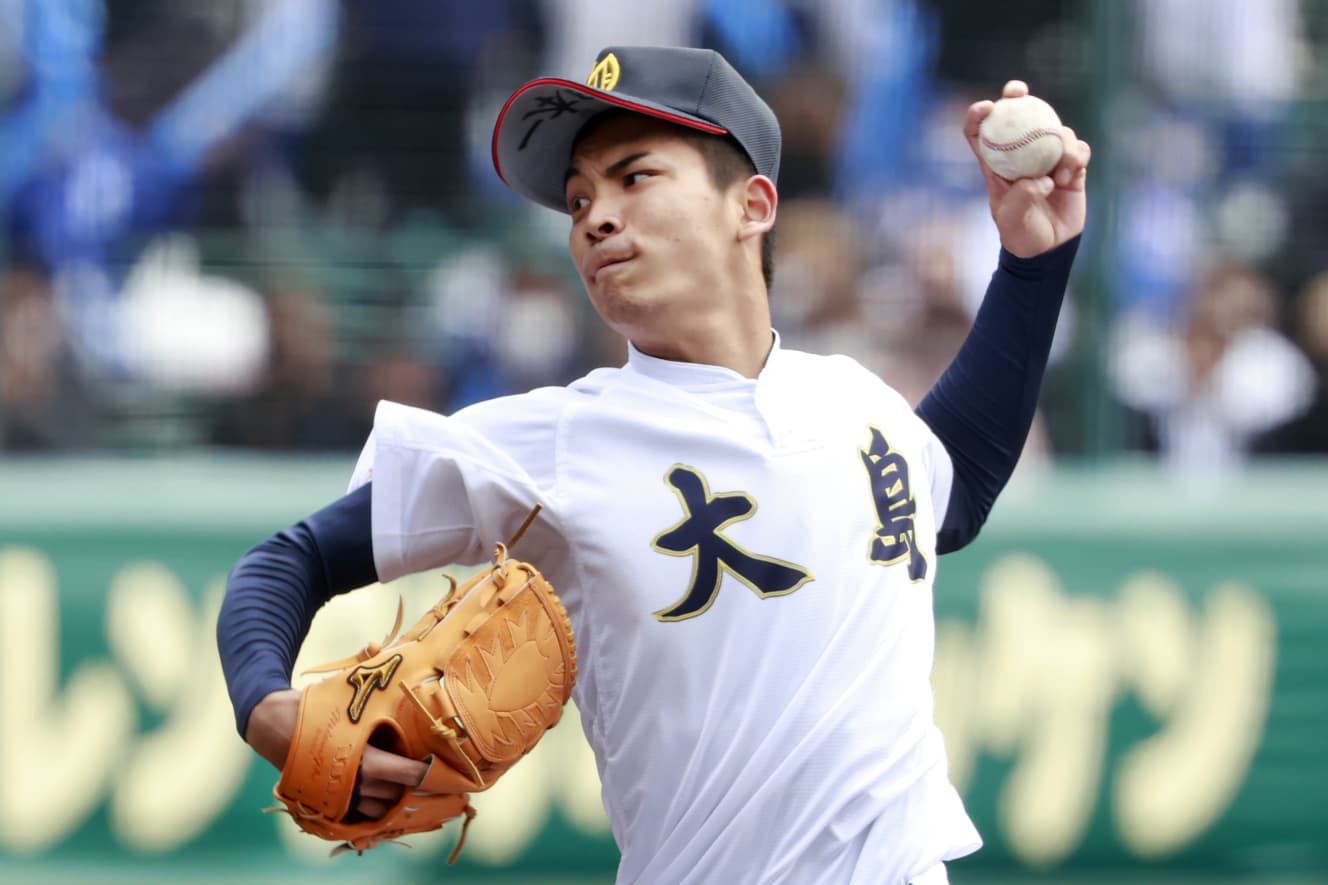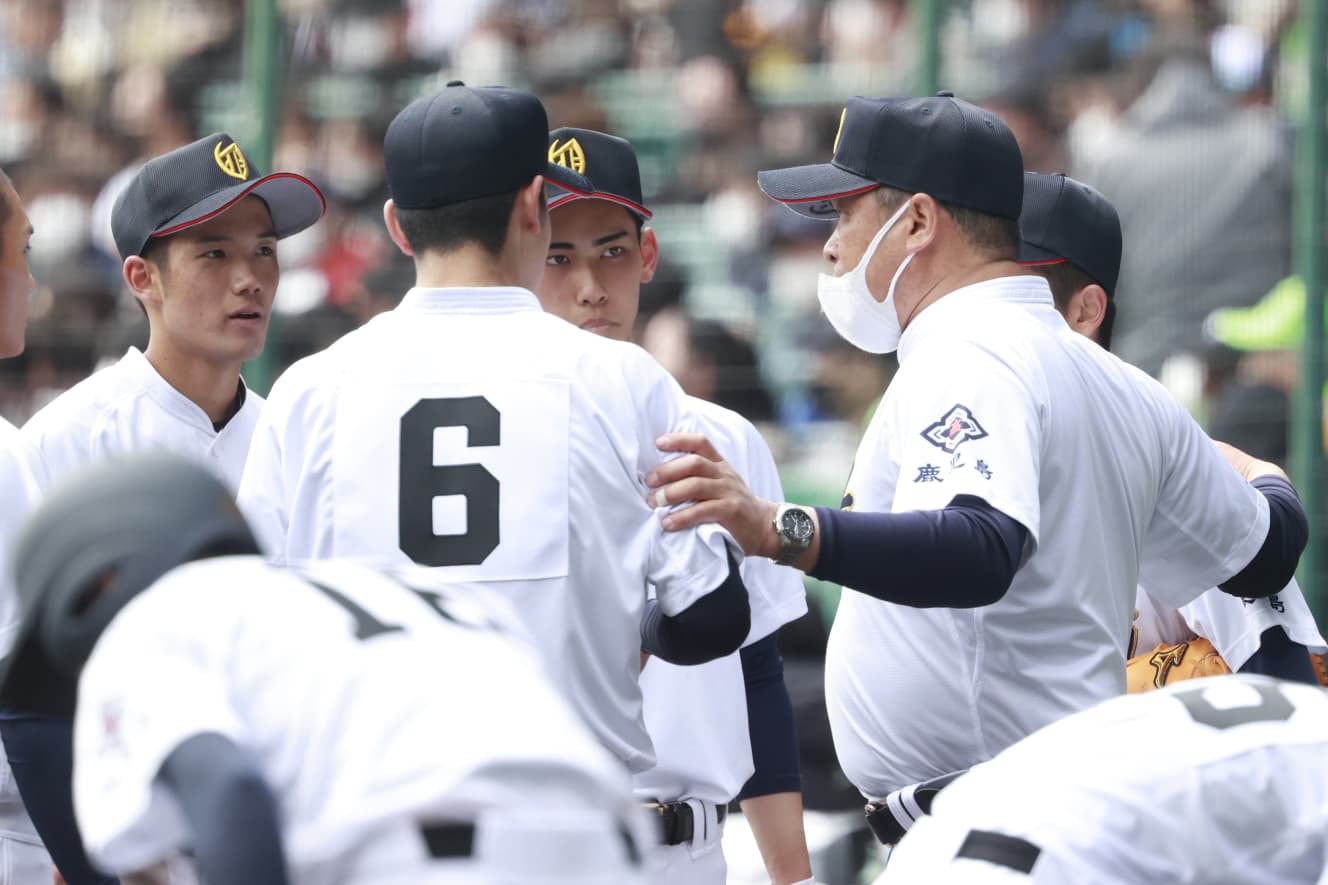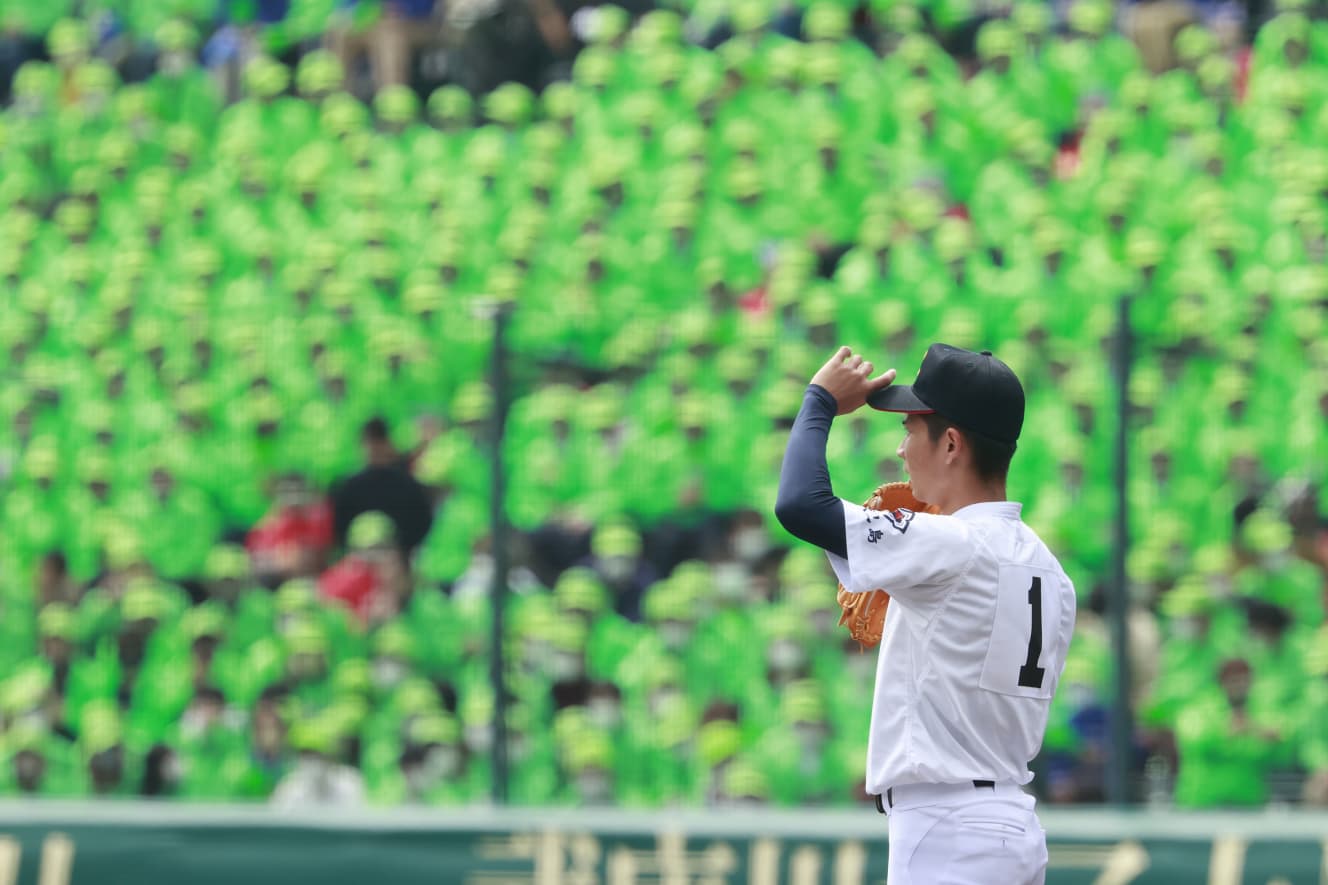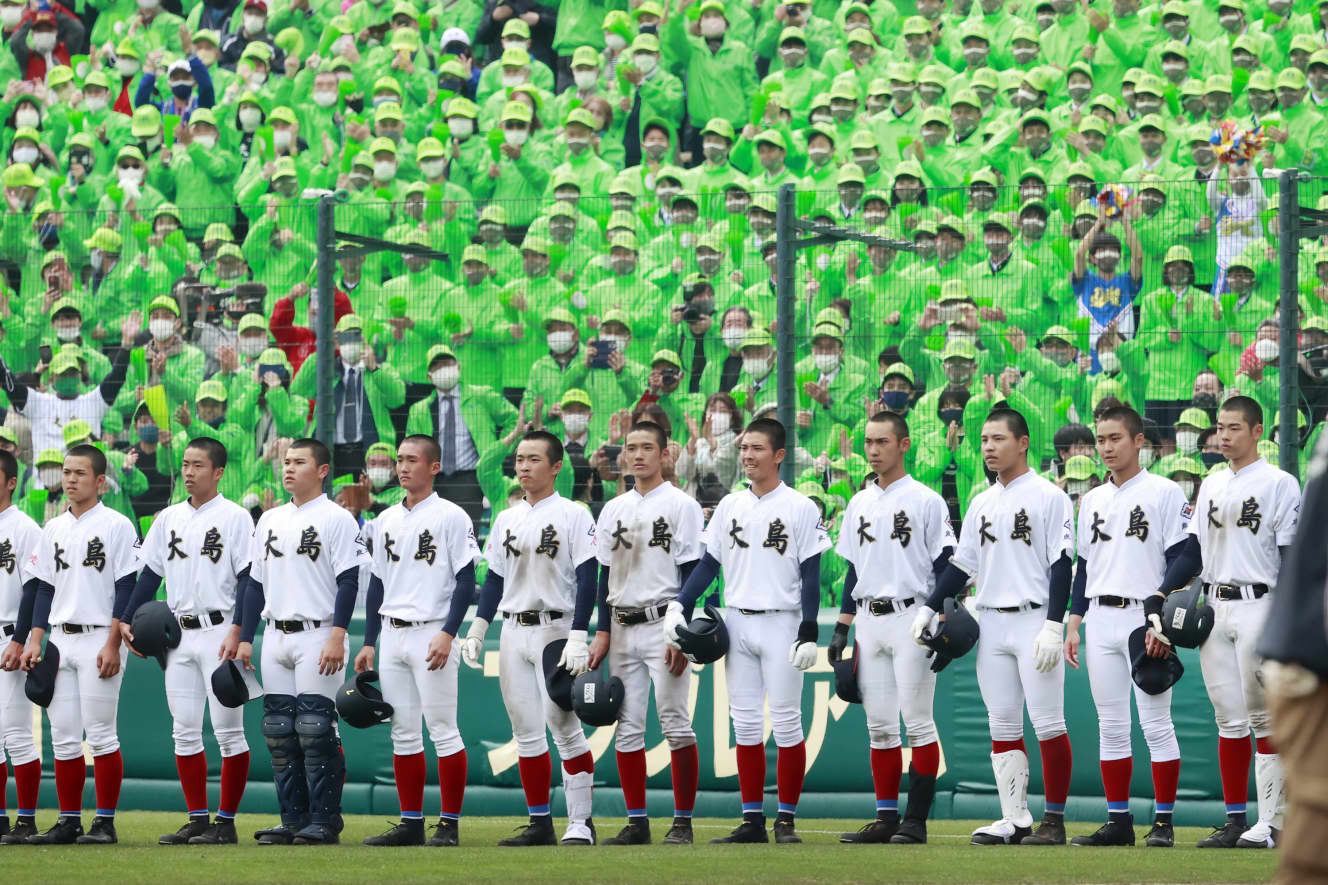The Challenge of Oshima High School, a Remote Island High School” They will surely have a great summer ahead of them.
Inside Report on the 2010 Senbatsu Tournament
The last time theteam was selected for the 21st Century, but this time, they won the right to participate based on their own ability. The team came to the Sembatsu Tournament on the strength of their runner-up finish in the Fall Kyushu Tournament. The team overcame the handicap of being on a remote island to compete. However, reality was not so sweet. Even so, Amami Oshima and Oshima High School baseball continued to evolve.

Overcoming the constraints of being on a remote island
The clapping of hands and the sound of megaphones. In the ninth inning, with one out and runners on first and second, Hatou Ono drew a walk to load the bases. Oshima ( Kagoshima ) advanced the runner to third base for the first time.
Oshima High School from Amami Oshima made its first appearance in the Senbatsu Tournament in 2014. The team was selected for the 21st century quota after finishing in the top four of the prefectural tournament in the previous fall. This time, they became the first high school from a remote island in Kagoshima Prefecture to win the Kagoshima Tournament last fall and the runner-up in the Kyushu Tournament, making them the eighth team to return to the Koshien Tournament in either spring or summer after winning the 21st Century Quota.
The driving force behind the team is left-handed baseball ace, Hatuo Ono. The team was named by Matsui’s father, who is a fan of Matsui’s. He has outstanding physical ability, as he was a member of the Ryugo Selected Team in the summer of his junior year at Ryunan Junior High School on Amami Oshima, and also competed in the prefectural track and field events in the triple jump and ekiden (long-distance relay race). Naturally, he has been invited by a number of strong schools outside the island.

There are many restrictions on playing high school baseball on a remote island. First, there is the distance to the prefectural capital across the sea and the financial burden: when I interviewed one of the teams that participated in the 21st century tournament, I was told, “If you have an official game in Kagoshima City, it takes 12 hours each way by ferry. If they win the tournament, they will have to pay extra for lodging, so expensive air travel is out of the question. Furthermore, there was a shortage of members and training partners. Above all, many promising athletes leave the island to be free from such restrictions. However, Tetsuya Nuruki, who arrived in April2002 and became assistant director before assuming his new position in July2004, is a man of great talent.
“ 21 The tide has been turning since the team’s appearance in the Centennial Bracket for the 21st Century in the Sembatsu Tournament,” says Mr. Kato.
The team’s performance is very good,” he said. Island children have always been physically strong, probably because they have been running around in the rich nature and eating calcium-rich fish from an early age. In 2008, the All-Amami club team, made up of selected members, finished second in Kyushu and reached the top eight in the national tournament held at Yokohama Stadium.
In the summer of 2010, Oshima, which had many members from that time, beat Kanoya Chuo, a seeded school, and reached the top 16. This helped to create a momentum to “go to the nationals from Amami,” and promising junior high school students began to stay on the island, albeit little by little.
Ryoga Takeda, the captain of the team, said, “Ohno and Shintaro Nishida, the catcher, are very happy to be back. 100 I thought I was going to leave Oshima for a long time,” said Ohno, who watched the 2002 Senbatsu with his father, an alumnus of the Oshima baseball team, in the alps stand.
It was cool. I was a big high school student myself. ( Nickname of Oshima High School ) I wanted to do it at There were invitations from the mainland, but also from everyone on the island. “ Let’s go to Koshien at Ohtaka! “ I thought that if I went to the Koshien from the island, I would feel a different sense of accomplishment.
He reveals why he remained on the island. He said, “ 19In the year “Remote Islands Koshien “A junior high school tournament called 2 It is also significant that the team made it to the semifinals,” says Nishida, a strong-hitting catcher with a .408 batting average in official games last fall.

Taking Advantage of Being on a Remote Island
From a different perspective, there are not only restrictions, but also advantages unique to the warm southern islands. In1994, Amami City launched its Sports Island concept, and as facilities were developed, professional baseball players began to choose the city as a site for their training camps. In 2010, Yokohama DeNA held its fall training camp, and even before that, there were many strong teams of working adults who held their spring training camps. The baseball classes held there provide an excellent opportunity for players and coaches to improve their skills. It is not often that teams in Japan have the opportunity to witness and receive instruction from the best amateurs in the world.
Amami’s baseball team has grown in strength. Thus, Oshima came to the Senbatsu Tournament for the second time last fall with Ono, who had a 1.21 earned run average and a 9.91 strikeout-to-walk ratio ( per game), both in the top 10 among the aces of the 32 schools.
Their first match was against Meishu Hitachi ( Ibaraki) . Ohno allowed one hit in the first inning against the strong batting lineup that won the Kanto Tournament in the fall, but struck out three and got off to a good start. In the 2nd inning, after a walk, he gave up a hit on a fly ball that the outfielder, who had slipped up, could not catch. In the 3rd and4th innings, with no runners on base and two outs in each inning, the team scored more runs due to a couple of unlucky hits. Manager Nuriki said, “We should have
“It was a mistake by the outfielder who couldn’t catch a fly that he could normally catch. ( Recorded as a hit ) is partly due to unfamiliarity with the characteristics of the game, as we were unable to practice at Koshien and did not experience the characteristics of the game. Meishu Hitachi’s strength is that they are able to connect this to points. In contrast, this team cannot easily steal third base. We need to work on our hitting ability more. However, Ohno is a good hitter. 5 From the 3rd inning onward, he regained his pitching touch and pitched well.”
As a result, Oshima lost 0-8, with Ono giving up eight runs in the fourth inning, but that was OK; from the fifth inning onward, Ono, who “started to pitch his own way,” allowed only one hit and no runs, showing a natural sparkle that a scout source described as “like Kenta Imamiya when he hit 62 home runs and threw 150 kilos at Meiho High School. Ohno recalled, “I was like Kenta Imamiya when he hit 62 homers and threw 150 kilometers.

In the second half, I was able to collect low balls, but in the beginning, I felt like I was floating too high with the ball, and I regret that I wasn’t able to pitch as well as I should have. However, the support of the islanders helped us. The mound at Koshien is a place I would like to return to again. For the people of Amami who cheered us on. …… “
This blue sky is connected to Koshien.”
was the message left by Haruo Wakimura, then president of the Japan High School Baseball Federation, when he visited Oshima Island in Amami City in June2008 as part of his activities to visit remote islands. On the day of Oshima’s defeat, it was cloudy at Koshien. Come back to Koshien again in midsummer, when the sky is blue.
Interview and text: Junko Yang